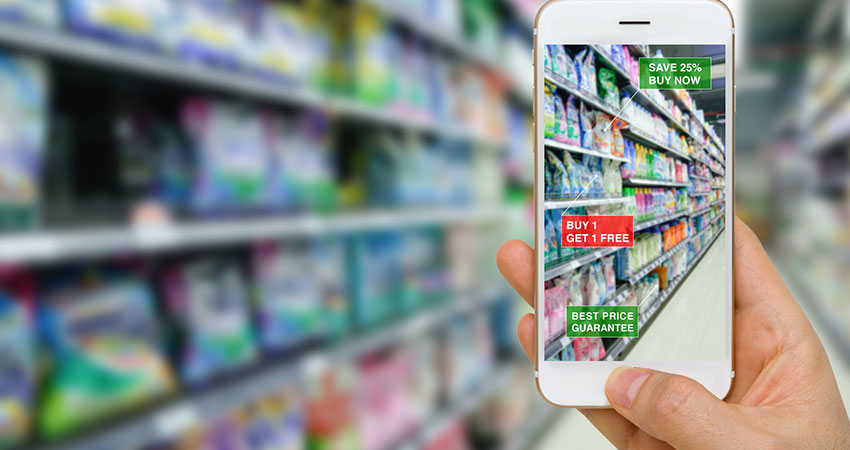E-grocery penetration in the U.S. reached 4.5% of the $839 billion grocery market in 2019, according to figures from Deutsche Bank cited by e-fulfillment technology provider Fabric, after hovering around 2% for years. It’s expected to exceed 10% by 2024 and hit 12% the following year.
The average industry growth estimate for e-grocery spending in 2019 across research groups was 30%, Fabric found.
According to a survey conducted by Fabric itself, more consumers are expecting immediate order fulfillment. Sixty-five percent of respondents said they would consider switching grocery retailers if they didn’t provide same-day delivery or curbside pickup, and 92% said they preferred same-day fulfillment over next-day or two-day. This is hardly surprising considering the immediacy of grocery shopping and grocery needs.
Consumer demand for same-day grocery is so strong, according to Fabric, that they were willing to pay $10 for it in 2019, a full $2 more than in 2018, based on data from Evercore ISI.
“Not only do consumers overwhelmingly prefer same-day delivery or pickup for their online grocery orders, but there’s now a growing preference for on-demand fulfillment,” Fabric noted. “Of all available fulfillment windows, 33% of consumers we surveyed prefer to have their grocery orders fulfilled within two hours, suggesting that the on-demand proposition is increasingly important.”
The number of consumers who reported receiving their online grocery order in two hours or less increased from 15% in 2018 to 25% in 2019, according to Evercore ISI.
Most grocers are relying on store pickers to fulfill e-grocery orders, either their own staff or from a service like Shipt or Instacart. Three out of four consumers surveyed by Fabric reported seeing a rise in store pickers handling such orders, with 33% saying it negatively impacted their shopping experience.
An alternative to using store pickers is implementing an automated micro fulfillment center (MFC), either in the rear of an existing grocery store, in an adjoining or nearby building or in a shuttered dark store. Solutions from a growing group of providers like Fabric, Autostore, Swisslog, Dematic, Tomkins Robotics and Takeoff Technologies have started to gain traction in the past year. Major chains using the technology include Meijer, Walmart, Albertsons, Safeway, Wakefern and Ahold Delhaize/Stop & Shop.
According to Fabric’s own survey, 69% of consumers plan to buy at least some of their groceries online in 2020, with 41% saying it would be up to 25% of their orders, and 18% saying it would be up to half. Generally, these preferences tend to skew younger.
The MFC trend will be covered as part of a new e-grocery track at Ecommerce Operations Summit 2020, April 14-16 in Orlando, FL. Other topics include “Establishing a Toolkit of E-Grocery Fulfillment Formats” and how to get ready for the rapid rise in e-grocery spending. You can see the entire agenda here.
During the month of February, register for Ecommerce Operations Summit at discounted rates and bring a colleague for just $99, by using the code “LEAPYEAR” at registration.

